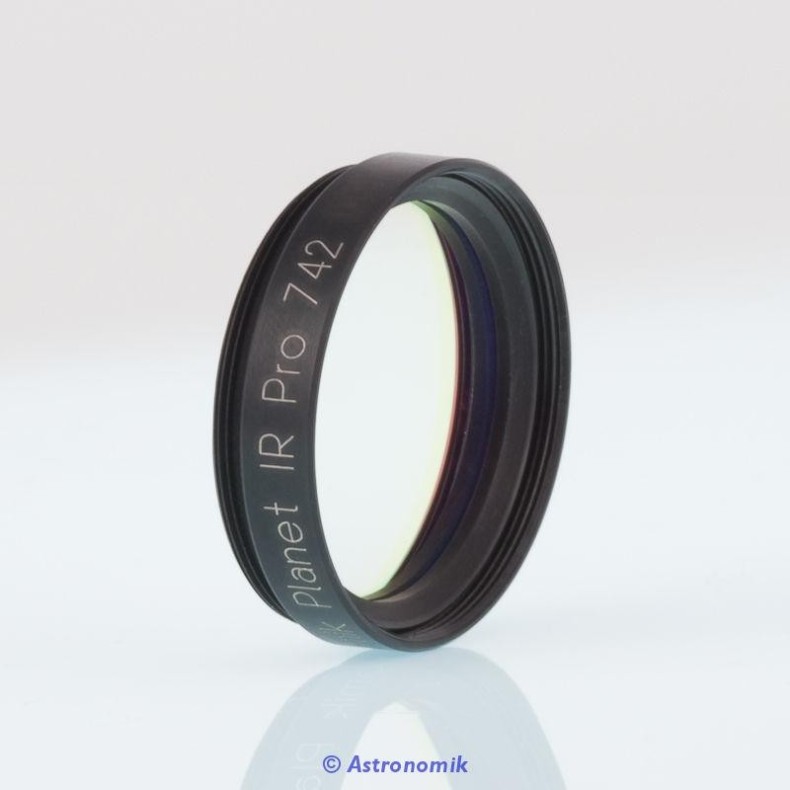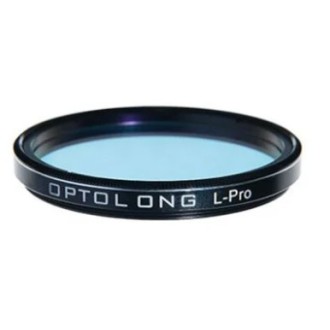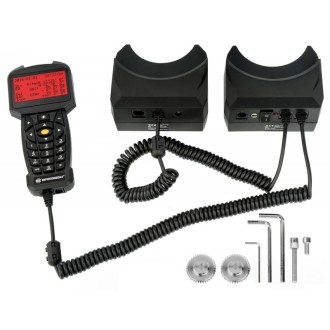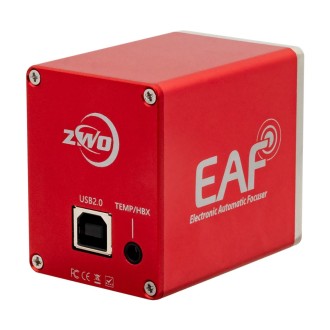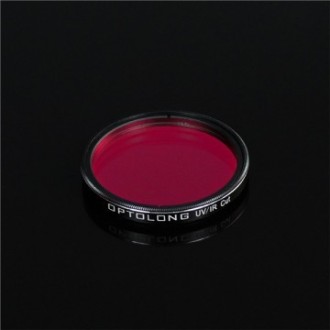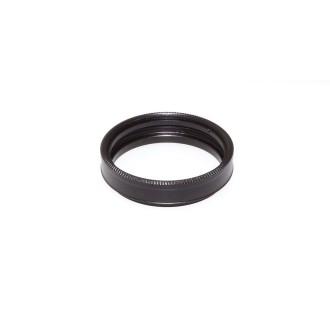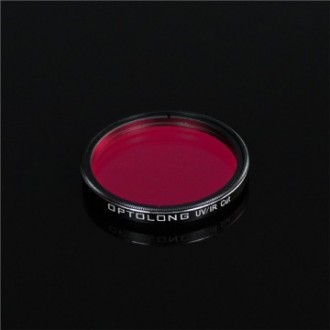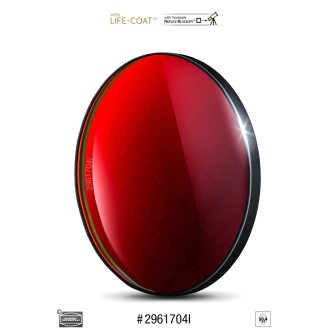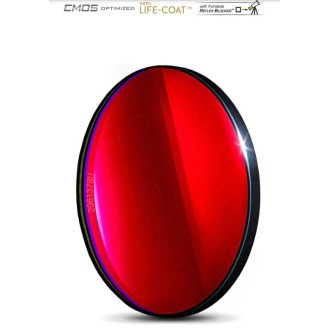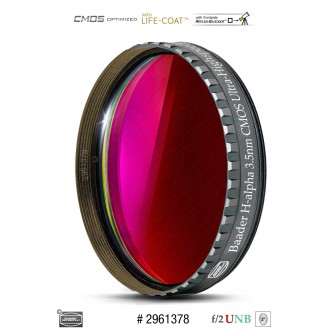Deliver it 8/15 days
Astronomik ASIRP7421 - ProPlanet 742 IR Filter
Astronomik ASIRP7421 - ProPlanet 742 IR filter.
| Carrier | Description | Estimated Delivery | ||
|---|---|---|---|---|
 |
Home delivery - International | Home delivery - International |
Thursday, 8 May - Thursday, 15 May |
|

Home delivery - International
Home delivery - International
Estimated delivery:
Thursday, 8 May - Thursday, 15 May
Astronomik ASIRP7421 - ProPlanet 742 IR filter.
This 1.25-inch IR pass filter is the ideal planetary filter for photographing the Moon and planets, especially Mars, with 6" (150 mm) aperture telescopes.
Its main features are:
-
-
-
-
- Ideal for digital photography without IR blocking filter
- Pass filter for wavelengths above 742 nm (> 96% transmission)
- Blocks wavelengths from 350 nm to 730 nm
- Ideal for lunar and planetary imaging
- Fully resistant to moisture, scratches and aging effects
- 10-year manufacturer's warranty
- Connection: 1.25 inch filter thread
- The ideal filter for digitally photographing the moon and planets, especially Mars, with 6 "(150 mm) aperture telescopes.
-
-
-
The Astronomik ProPlanet IR 742 filter only allows infrared light with wavelengths longer than 742 nm to pass through. In this wavelength range, the harmful effects of bad seeing are significantly lower than in the spectrum visible to the human eye. This allows you to obtain much sharper images than you can normally obtain with your equipment from your usual location. Another advantage is that the background of the dawn night sky is dark, so the filter even allows photography of the planets and the Moon in daylight.
Especially suitable for Mars photography, this filter allows the maximum spectral range to pass through with maximum detail.
Primary use:
-
-
-
-
- Astronomik's ProPlanet IR 742 cuts off the visible part of the spectrum and allows light of wavelengths longer than 742 nm to pass through. Due to this behavior, the part of the spectrum that is more sensitive to bad seeing conditions is rejected. Thus, the image obtained is more stable than the image that would be obtained in visible light with almost identical exposure times.
-
-
-
Other uses:
-
-
-
-
- In addition to astrophotography, the filter allows you to obtain impressive results in nature photography. If you use a clip-on filter on a modified digital SLR, you get excellent results for flower images. The filter cuts off the part of the spectrum where chlorophyll appears green and shows its high reflectivity in the near infrared. If trees are photographed in spring and summer under blue skies, you will get stunning images with white trees and clouds in front of an almost black sky background.
- Darken the sky background during twilight or dawn.
- Imaging bright planets, stars and comets in daytime.
- Imaging of young stars in dust and gas clouds and stellar nurseries.
-
-
-
Suitability:
-
-
-
-
- Visual observation (dark skies): inadequate, the eye is insensitive in this spectrum
- Visual observation (urban skies): inadequate, the eye is insensitive in this spectrum
- Film photography: depends on the film
- CCD photography: reasonable, for special IR photography (such as chlorophyll)
- DSLR photography (original): unsuitable
- DSLR photography (modified for astrophotography): unsuitable
- Webcam / Video (Planets): excellent, avoids problems due to poor seeing
- Webcam / Video (Deep sky): excellent, avoids problems due to bad seeing
-
-
-
Technical data:
-
-
-
-
- Over 96% transmission for wavelengths from 742 nm to 1100 nm
- Wavelength blocking between 350 nm and 730 nm
- Parfocal with other Astronomik filters
- Glass thickness: 1 mm
- Completely resistant to high humidity, scratches and aging effects
- Diffraction limited, the filter will not reduce the optical performance of your telescope
- Astronomik filters are delivered in a high quality, long-lasting case
-
-
-
Analyzing the curve we observe that:

-
-
-
-
- The horizontal axis is the wavelength in nanometers (nm). 400 nm is the intense blue color, at 520 nm the human eye detects green, and red at 600 nm. At 656 nm is the famous "H-Alpha" hydrogen emission line.
- The transmission in % is plotted on the vertical axis.
- The red line shows the transmission of the filter.
- Visual filters: the gray line at the bottom shows the relative sensitivity of the human eye at night. The maximum is at ~ 510 nm and falls off at longer and shorter wavelengths.
- Photographic filters: The gray line in the background shows the sensitivity of a typical CCD sensor.
- The most important artificial emission lines are shown in orange. Artificial light pollution is dominated by mercury (Hg) and sodium (Na), which are used in almost all street lamps.
- The most important emission lines from nebulae are shown in green. The most important lines are from ionized hydrogen (H-alpha and H-beta) and double ionized oxygen ([O III]). Square brackets indicate that these lines are forbidden.
-
-
-
Alternatives:
When seeing is very bad and the instrument is 10" (250 mm) or larger, the Astronomik ProPlanet IR 807 filter may be the best choice.
Astronomik ASIRP7421 - ProPlanet 742 IR filter.

